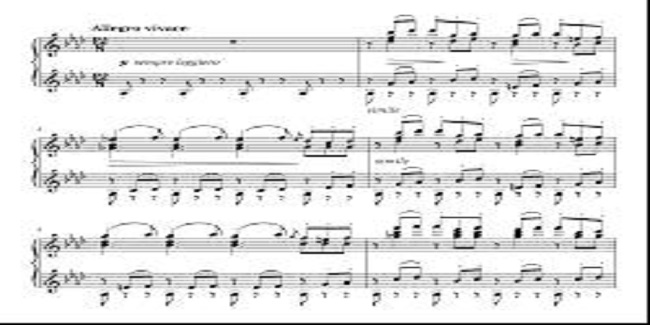
The score is quite experimental in sound and aims to capture the sounds of the band who played as the ship sank as well as the imagined music continuing one through the cold water long after the gigantic ship had reached the ocean floor. Such was the tragedy and avoidable loss of life, that it has inspired poetry, films, and Gavin Bryars score that existed purely as a page of types of instructions without any notation. The sinking of the Titanic is an event that perhaps due to the film, resonates with many people generations after the event.

The Sinking of the Titanic – Gavin Bryars (1969-72)
#Familiar famous music compositions full
The music evolves in a slow glistening fashion, full of evocative harmonic subtleties that create an other-worldly image.ĥ. ‘Neptune’ is the last of the planets Holst composed and is subtitled, ‘The Mystic’. This in itself gives an icy, eerie timbre to the piece. The clever aspect of this is that Holst places the two choruses off-stage, unseen by the audience. The orchestral forces Holst scores the work for are large and for ‘Neptune’ include two female choruses that include alto and soprano parts. Holst chose to depict the astrological characteristics of each planet and its influence on the human psyche. Holst composed the score during one of the most troubled and violent decades, 1914-1916, and the echoes of war resonate especially in ‘Mars’. ‘The Planet Suite’ has become one of the most performed pieces of orchestral music. Gustav Holst ‘Neptune, the Mystic’ from The Planets (Op.32) These give the piece a haunted quality that in conjunction with the sobering title, leaves a lasting impression on the listener.Ĥ. It is a chilling work containing intricate textural maneuvers that include extended playing techniques. The score makes extensive use of graphic notation and as such empowers the performers with a greater degree of interpretative freedom than conventional notation would. It is an unusual, experimental work that Penderecki scored for 52 string players. At this point, he was struck by the intensity of emotion the work contained and he resolved to give the composition a more meaningful title than 8’37” (as he originally intended). Interestingly enough, Penderecki did not give the piece its title until after he had heard a performance. Krzysztof Penderecki ‘Threnody for the Victims of Hiroshima’ (1960) It is a nightmarish scene that plays on the fears of children and adults alike.ģ. If you listen carefully, you can hear the goblin scurrying around, scratching the walls and dancing in the cold, silvery moonlight. For me, the fairy-tale focus of Gaspard de la Nuit is not a sparklingly happy one, and ‘Scarbo’ chooses a malevolent goblin as its subject matter, making the whole piece decidedly unsettling. The final movement is considered by many scholars and pianists to be one of the most technically challenging pieces of the piano music of the time, but this has not diminished its popularity.ĭespite what you may already know about Ravel through his ‘Bolero’ or Piano Concerto, often a darker undertone crept into his later works.

‘Gaspard de la Nuit’, for solo piano, was inspired by the poems of Aloysius Bertrand and is structured broadly in three movements as follows: ‘Ondine’, ‘Le Gibet’, and ‘Scarbo’. His piano music is amongst the finest to have been written during the ‘Impressionist’ period of music. Ravel was not only a masterful orchestrator, but he was also a gifted pianist. Maurice Ravel ‘Scarbo’ from ‘Gaspard de la Nuit’ (1908) It is otherworldly and unsettlingly brilliant.Ģ. You very quickly become lost in Ligeti’s labyrinth of sounds, unsure and enchanted by the masses of rich colors he conjures from the orchestra.

Melodies, rhythms, and harmonies blend into galaxies of sound that stretch and flex like a beautiful, mesmerizing celestial phenomenon. Where Ligeti succeeded in the writing of ‘Atmosphères’ is to compose a work that feels as if it is still and timeless. Ligeti uses enormous orchestral forces in ‘Atmosphères’ including quadruple woodwind. The piece is used to chilling effect in the film because it has an undeniably eerie quality to it. Some of you may have already heard this work perhaps without associating it with Ligeti in the film of Arthur C Clarke’s ‘2001 A Space Odyssey’, directed by the visionary Stanley Kubrick. Ligeti has an extraordinary ear for gigantic, sonorous pieces of orchestral music, and ‘Atmosphères’ is no exception. His remarkable ability to construct dense, moving textural clouds of music is like no other composer I know. One of my favorite contemporary composers is Ligeti.


 0 kommentar(er)
0 kommentar(er)
